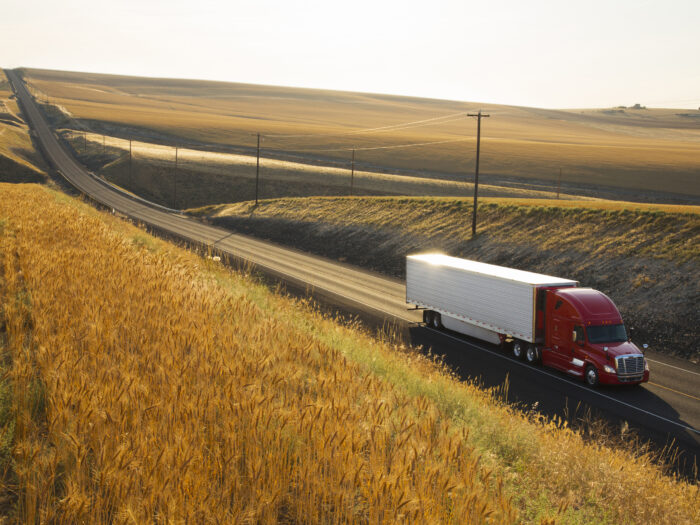Why Embracing Technology and Staying on Top of Claims Trends Can Help Beleaguered Commercial Auto Insureds

In 2023, commercial auto insurers lost $5 billion and the first half of 2024 wasn’t much better, according to AM Best.
The line, which has long struggled, is battling increasing claims costs and a tough litigation environment. Commercial auto policies can cover everything from car rental companies and limousine services to school buses and delivery vehicles. In the last quarter of 2024, many of these companies saw their premiums continue to rise.
“We need to keep up with these increased loss costs,” said Mark Plousis, senior vice president of commercial auto underwriting for Philadelphia Insurance Companies.
Still, carriers continue to see opportunity in the commercial auto space, especially for insureds who implement strong risk management controls. Tools that monitor vehicle health and driver behavior can aid in preventing claims and in turn keep insurance costs down — something that is vitally important to insureds. Working with a carrier which has a lot of experience in the commercial auto space can aid insureds who are trying to stay ahead of the latest industry trends.
“I have an old saying in auto: good accounts get good pricing,” Plousis said. “If accounts manage themselves well, manage their losses, manage their driver behavior, well, then they’ll end up with good pricing.”
Rising Repair Costs
A number of factors have contributed to rising claims costs in the commercial auto space. For more than a decade, plaintiff’s attorneys have honed their strategies in order to secure higher settlements and verdicts for their clients.
Between 2010 and 2018, the average size of verdicts of more than $1 million increased 967% from $2,305,736 to $22,288,000, an American Transportation Research Institute study found, and the trend of rising litigation, verdict and settlement costs has continued.
At the same time, supply chain issues and inflation brought on by the pandemic have increased the cost of repairing vehicles damaged during an accident. Many vehicles also contain a lot more technology than they did before, further driving up replacement costs.

Mark Plousis, Senior Vice President of Commercial Auto Underwriting, Philadelphia Insurance Companies
The tariff wars we are now undergoing will probably only add to those costs.
“It’s pretty widespread and publicized,” Plousis said. “We’re going to continue to see loss costs go up due to social inflation, and as loss costs go up, we have to raise the rates just to keep up.”
These issues have had a ripple effect for reinsurers who are now increasing their rates in response to claims from multiple carriers.
“Our reinsurers have pumped up the rates because they’re getting hit by multiple carriers, and they have increased the rates on the excess limits,” Plousis explained.
The Lingering Effects of COVID
All of these factors — inflation, nuclear verdicts, rising repair costs — are exacerbated by the lingering effects of the pandemic, which put a lot of commercial auto players, especially limousine providers, out of business.
“When COVID hit, only the strong limo operators survived,” Plousis said. “We lost some of our competitors who were weak, and we lost some of the customers that couldn’t survive.”
Those that did survive the pandemic often had the help of a strong insurance carrier who kept them abreast of the latest exposures and helped them prepare for their impacts. These insurers have been able to stay ahead of these claims trends, producing better results for insureds.
“We did a really nice job of helping the industry,” Plousis said. “Were we out in front of this? Yeah, and our reinsurers have commended us for being out front of it, but now the rest of the industry is trying to catch up.”
Carriers have introduced telematics tools, like Philadelphia Insurance Companies’ PHLYTRAC, that help monitor driver behavior which can help prevent costly claims. These tools can also monitor vehicle health and help manage fuel costs — increasing the opportunities for companies to engage in preventative maintenance for their fleets and save money. Plousis says he’s seen a 15% reduction in accident frequency for insureds that use these tools.
“I’m a big proponent of managing driver behavior,” Plousis said. “If drivers know they’re being monitored … they usually do a better job.”
Many insureds are excited to adopt these tools because of their potential to improve driver behavior and prevent accidents. They know that telematics can show carriers that they’re doing their best to prevent claims, which can in turn lead to reduced insurance costs.
“Our customers want to improve, want to do better, because they don’t want to go out into the open market and really get sticker shock of what’s out there,” Plousis said. “The industry — especially a lot of our fleet products — has really embraced it.”
Opportunities for Growth
Though large car rental companies have been acquiring smaller competitors for years, there remains a good number of independent operators out there. Some auto body shops and car dealerships have smaller fleets of rental vehicles. These firms need coverage for state minimums and an owner excess policy. The state minimum protects people who are renting the vehicles by ensuring they are compliant with the minimum insurance requirements set by the state. The owner excess policy protects the owner of the rental car.
“A small, independent rental car company may have 25 to 50 vehicles. That’s a good sweet spot for us,” Plousis said.
Some independent accounts in the daily auto rental space have opportunities for growth. Plousis says he saw one operator grow into a multimillion-dollar account.
“There’s been growth in independents,” Plousis said. “I see an opportunity there.”
Carriers are also viewing buses, especially school buses in rural and suburban areas, as an area for steady growth.
“We’ve been doing buses and transportation for a long time in nonprofits, for profits, daycares, schools,” Plousis said. “It’s something that our claims department has excellent expertise in [and] our risk management department is well versed in that.
“It’s a well-run sector,” Plousis continued. “We’re really focusing on rural and suburban school bus operators.”
Though macroeconomic trends may still be presenting headwinds, insuring commercial auto sustainably is not impossible. It does require up-to-the-minute risk management expertise. &








